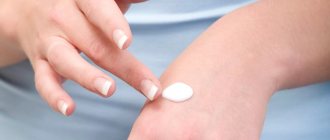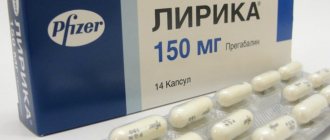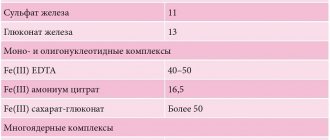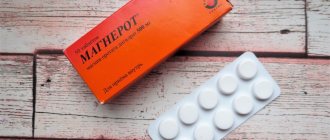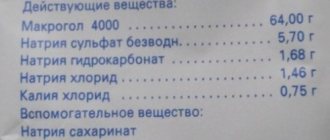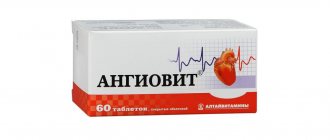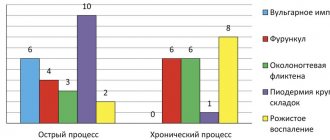Pharmacodynamics and pharmacokinetics
The effect of the medicine is determined by the components included in its composition.
Dexamethasone is a glucocorticoid with a pronounced anti-inflammatory effect. Once in the body, the substance interacts with specific receptors, penetrates the cell nucleus, and affects the formation of mRNA .
Thus, the process of formation of proteins on ribosomes , especially lipoprotein , which is responsible for the formation of specific responses of the body to inflammatory processes, allergies , etc. Inflammatory mediators cease to be released from mast cells and eosinophils . This substance has virtually no mineralocorticoid activity .
Lidocaine hydrochloride anesthetizes locally; during the injection of the drug into the muscle, the patient practically does not feel pain.
Phenylbutazone pyrazolone derivative . Reduces body temperature, relieves pain and relieves inflammation. Has a uricosuric effect.
Cyanocobalamin is a B vitamin that has hematopoietic, metabolic and antianemic effects . The substance is involved in lipid and carbohydrate metabolism, the processes of regeneration of nerve cells, is part of nucleic acids , and can enhance the analgesic effect of the drug.
Sodium salicylamide anesthetizes and improves the solubility of the drug.
Due to the fact that the components of the drug mutually enhance each other's effects, the dosage of dexamethasone can be significantly reduced.
The drug has a fairly long shelf life. The medicine can be stored for so long due to the fact that solutions No. 1 and No. 2 are separated from each other.
After the injection is given intramuscularly, the active substances quickly penetrate into the systemic bloodstream.
Phenylbutazone binds well to plasma proteins and penetrates the placenta, and tends to be excreted in breast milk. Metabolism occurs slowly. The half-life is about three hours.
Ambene Bio solution for injection, ampoules of 1 ml, 10 pcs.
Registration Certificate Holder
EN. SI. PHARMACEUTICALS (Russia)
Dosage form
Medicine - Ambene® BIO (Ambene BIO)
Description
Injection
colorless or light yellow to light brownish yellow.
1 ml
concentrated extract from small sea fish 0.1 g
Excipients
: phenol - up to 0.005 g/ml, water for liquid - up to 1 ml.
1 ml - light-protective glass ampoules (5) - contour cell packaging made of polyvinyl chloride film (2) complete with an ampoule knife, scarifier or without - cardboard packs.
Indications
Primary and secondary osteoarthrosis of various localizations (coxarthrosis, gonarthrosis, arthrosis of small joints), osteochondrosis, spondylosis.
Contraindications for use
Hypersensitivity to the components of the drug; pregnancy, lactation period; childhood.
pharmachologic effect
Chondroprotector. The active component is a bioactive extract from small sea fish, which contains mucopolysaccharides (chondroitin sulfate), amino acids, peptides, sodium, potassium, calcium, magnesium, iron, copper and zinc ions.
Prevents the destruction of macromolecular structures of normal tissues, stimulates restoration processes in interstitial tissue and articular cartilage tissue, which explains its analgesic effect. Anti-inflammatory effect and tissue regeneration are based on inhibition of hyaluronidase activity and normalization of hyaluronic acid biosynthesis. Both of these effects are synergistic and cause the activation of restoration processes in tissues (in particular, restoration of the structure of cartilage).
Dosage regimen
IM, intra-articular. The dose, frequency of administration and duration of treatment depend on the indications.
Side effect
Allergic reactions:
rarely - itching;
very rarely - anaphylactic reactions. Local reactions:
rarely - redness of the skin and a burning sensation at the injection site.
Other:
short-term myalgia. In some cases, with intra-articular injections, a transient increase in pain may occur.
special instructions
In case of individual intolerance to seafood (sea fish), the risk of developing allergic reactions increases.
Prescribing the drug in adolescence is not recommended due to the lack of clinical data in this category of patients.
Use during pregnancy and breastfeeding
Restrictions during pregnancy - Contraindicated. Restrictions when breastfeeding - Contraindicated.
The use of the drug is contraindicated during pregnancy.
If it is necessary to use the drug during lactation, breastfeeding should be discontinued.
Use in children
Restrictions for children - Contraindicated.
Use in children is contraindicated.
Contraindications
Injections are contraindicated:
- if allergic to any of the components of the medicine;
- elderly patients;
- for disorders of the kidneys, liver, thyroid gland ;
- patients suffering from gastritis , gastric ulcer ;
- for myasthenia gravis , myelosuppression , Sjögren's syndrome ;
- for heart failure , arrhythmia and myocardial infarction ;
- if the patient is infected with the herpes , mumps , polio , chickenpox ;
- with the development of lymphadenitis after administration of the BCG ;
- pregnant and lactating women;
- for systemic mycosis , glaucoma , myopathy ;
- patients with systemic lupus erythematosus , temporal arteritis , stomatitis ;
- for hemorrhagic diathesis , pancreatitis ,
- in the period before (2 months) and after (14 days) vaccination ;
- children under 14 years of age;
- after surgical interventions.
Ambene Bio
Trade name: AMBENE Bio
Pharmacological group: tissue repair stimulant of natural origin
Compound:
for 1 ampoule:
Bioactive extract from small sea fish - 1.0 ml
includes:
Active ingredient: concentrated extract from small sea fish - 0.1 g/ml
Excipients: phenol - up to 0.005 g/ml, water for injection up to 1.0 ml
Description:
colorless or light yellow to light brownish yellow liquid.
Pharmacodynamics:
AMBENE Bio is a chondroprotector, the active component of which is a bioactive extract from small sea fish. The extract contains mucopolysaccharides (chondroitin sulfate), amino acids, peptides, sodium, potassium, calcium, magnesium, iron, copper and zinc ions.
AMBENE Bio prevents the destruction of macromolecular structures of normal tissues, stimulates restoration processes in interstitial tissue and articular cartilage tissue, which explains its analgesic effect. Anti-inflammatory effect and tissue regeneration are based on inhibition of hyaluronidase activity and normalization of hyaluronic acid biosynthesis. Both of these effects are synergistic and cause the activation of restoration processes in tissues (in particular, restoration of the structure of cartilage).
Indications for use:
AMBENE Bio is used in adults for primary and secondary osteoarthrosis of various localizations (coxarthrosis, gonarthrosis, arthrosis of small joints), osteochondrosis and spondylosis.
Contraindications:
Hypersensitivity to the components of the drug.
Pregnancy and lactation period.
Childhood.
Carefully:
Prescribing the drug in adolescence is not recommended due to the lack of scientific clinical data in this category of patients.
Dosage regimen:
For polyosteoarthrosis and osteochondrosis, the drug is administered deeply intramuscularly, 1 ml per day. The course of treatment is 20 injections (1 injection per day for 20 days).
If large joints are predominantly affected, the drug is administered intra-articularly, 1-2 ml into each joint with an interval of 3-4 days. A total of 5-6 injections into each joint per course.
A combination of intra-articular and intramuscular administration is possible.
It is advisable to repeat the course of treatment 6 months after consulting a doctor.
Side effects:
The frequency of adverse reactions listed below was determined according to the following gradation: very often (>,/= 1/10), often (>,/=1/100, <,1/10), infrequently (>,/= 1/1000 , <,1/100), rare (>,/= 1/10000, <,1/1000), very rare (<,1/10000).
Allergic reactions:
rarely - itching,
very rarely - anaphylactic reactions.
Local:
rarely - redness of the skin and a burning sensation at the injection site.
Other:
short-term myalgia. In some cases, with intra-articular injections, a transient increase in pain may occur.
Overdose:
In case of overdose, allergic reactions (sometimes severe) may occur in predisposed patients.
Interaction:
So far not identified.
Special instructions:
In case of individual intolerance to seafood (sea fish), the risk of developing allergic reactions increases.
Use during pregnancy and breastfeeding
AMBENE Bio is contraindicated during pregnancy. If it is necessary to use the drug during lactation, breastfeeding should be stopped.
Best before date:
2 years. Do not use after the expiration date stated on the packaging.
Storage conditions:
In a place protected from light at a temperature of 15-25 degrees C.
Keep out of the reach of children.
Side effects
The following side effects may occur while taking the drug:
- headache , insomnia , mental, hearing or vision disorders;
- anorexia , nausea and vomiting, diarrhea , gastralgia , increased levels of liver enzymes, rarely bleeding and damage to the gastrointestinal tract ;
- itching of the skin, fever , Lyell or Stevens-Johnson , bronchospasm ;
- agranulocytosis , leukopenia , pancytopenia , decreased blood pressure , thrombocytopenia .
Rarely possible: mycosis , decreased immunity , abscess and pain at the injection site, sialadenitis , Itsenko-Cushing syndrome , lymphadenopathy .
Instructions for use of Ambene (Method and dosage)
As a rule, the medicine is prescribed 1 injection per day. Injections are made every day or every other day, but not more than 3 times a week.
If there is a need for another course, you should wait a few days.
Injections are given intramuscularly, deeply, slowly. The drug should be drawn into the syringe first from ampoule A, then from ampoule B.
Instructions for using Ambene in a syringe
- Remove the protective rubber cap from the end of the syringe, put the needle included in the kit on it.
- Slowly move the piston until the first drop appears at the end of the needle, and both chambers with the solution in the syringe should mix.
- The drug should be administered immediately after performing the procedures described above.
- The temperature of the solution should be about 36-37 degrees.
Complex therapy with Ambene in the practice of an internist and rheumatologist
R
Eumatic diseases (ED) are characterized by widespread prevalence, damage to people of various age groups, a progressive nature of the course with a tendency to chronicity, leading to loss of ability to work and early disability of patients. RD includes diseases of the musculoskeletal system and connective tissue, combining more than 150 different nosological forms and syndromes (XIII class of diseases according to the International Classification of Diseases, X revision), the main manifestation of which is inflammation and pain in the joints.
Among rheumatic diseases, osteoarthritis, rheumatoid arthritis (RA), seronegative spondyloarthropathy, microcrystalline arthritis, and other forms of pathology are of particular theoretical and medical and social importance.
, the International Decade of Bone and Joints was organized and opened in January 2000 in Geneva
(The Bone and Joint Decade 2000–2010) (Table 1), designed to draw public attention to the existing problem.
The goal of the Decade, according to its organizers, is to improve the quality of life of patients with osteoarticular pathology, for which the following tasks must be solved: public awareness of the suffering and costs of articular and skeletal disorders; the opportunity for patients to participate in decisions regarding their health; public awareness of the need to improve the prevention and treatment of these diseases through scientific research. Most diseases of the musculoskeletal system are characterized by a chronic progressive course
, especially if for some reason adequate pathogenetic therapy is not carried out. The result is a gradual loss of ability to work, disability and an inevitable decline in the quality of life.
Disability is the most important socio-economic factor of the disease, and taking into account the fact that it can occur already in the early stages of the disease, the cost of this for the patient and society as a whole becomes clear.
At the same time, the solution to many issues depends on the organization of the work of the rheumatology service, since early diagnosis and adequate therapy often determine the course and prognosis of diseases, and, accordingly, the level of material costs for the treatment of such patients.
It is known that the main symptom that unites many rheumatic diseases is pain (Table 2). E.L. Nasonov and V.A. Nasonova (2000) note that the variety of pathophysiological mechanisms of pain in rheumatic diseases determines the use of a wide range of drugs to suppress it. Many of them are shown in Table 3.
One of the attempts to enhance the effectiveness of drugs used in rheumatology and improve their analgesic effect is the creation and use of combination drugs that include substances with different mechanisms of action.
As a rule, combination drugs are prescribed for exacerbations of the disease, increased inflammatory activity and pain. One drug that may be useful in situations where monotherapy is ineffective is Ambene
. The drug is intended for intramuscular administration and is available in ready-made syringes in two versions (Table 4). The drug is prescribed 1 injection per day every day or every other day. Make no more than 3 injections per week. If repeated courses of treatment are necessary, the interval between them should be at least several weeks.
The combination of dexamethasone and phenylbutazone provides a rapid onset of effect, long-lasting pain relief and anti-inflammatory effect. Potentiation of the effects of the drug components makes it possible to reduce the dose of dexamethasone. The addition of cyanocobalamin helps improve microcirculation and nerve conduction in the damaged area. Sodium salicylamide ensures good solubility of the drug, which reduces the risk of post-injection complications. The presence of lidocaine in Ambene makes the injection of the drug painless. The drug is intended for intramuscular administration and is available in two versions: double ampoules and ready-made syringes, convenient for use in acute cases.
This drug is widely used in neurology, where it has proven to be highly effective and safe in the treatment of acute pain and exacerbations of chronic pain syndromes in patients with inflammatory and degenerative diseases of the spinal joints, especially in patients with acute radicular syndromes (Table 5).
Indications for the use of
Ambene in this area are such forms of lumboischalgia as muscular-tonic, neurodystrophic, as well as radicular pain caused either by a herniated disc (the main cause of radicular pain in young people), or by spondyloarthrosis (spondylosis), which is the main cause of pain in the back of elderly patients in the outpatient practice of an internist, rheumatologist, neurologist.
According to V.G. Kukesa et al., during treatment with Ambene, there was a complete or significant decrease in all the main clinical symptoms of diseases with severe pain. The most effective method was to administer Ambene directly to the intervertebral foramen and nerve root during paravertebral novocaine blockades in patients with exacerbation of pain in the lower back due to lumbar osteochondrosis. Apparently, along with the systemic effect, the positive effect of Ambene occurs primarily locally, in the zone of discordicular conflict. The drug has a pronounced dehydrating effect, eliminates root swelling, is anti-inflammatory, and also improves microcirculatory processes and nerve conduction. This is confirmed by the priority restoration of the sensitive portions of the root, most susceptible to hypoxic influence (according to the study of somatosensory evoked potentials). During the use of Ambene, positive dynamics of somatosensory evoked potentials were noted in the form of a decrease in the latency of spinal responses and an improvement in their qualitative characteristics, as well as a decrease in the severity of long-latency nociceptive responses. The multicomponent composition of Ambene for paravertebral blockades has a powerful multi-level effect on pain, which leads to a quick and lasting effect.
G.M. Burmakov and S.P. Mironov studied the effectiveness of Ambene in the complex treatment of lumbar pain in athletes and ballet dancers. The authors noted a significant decrease in back pain and an increase in spinal mobility during the first day of treatment, which was accompanied by positive dynamics in thermographic studies.
The points of application of Ambene in rheumatology are pain and inflammation. The “Manifesto for Rheumatological Patients,” addressed to residents of the 3rd millennium on behalf of 103 million Europeans suffering from rheumatic diseases, states that “constant pain, increasing limitation of mobility, gradual loss of the ability to work and care for oneself sharply reduce the quality of life of a patient with rheumatological disease.”
In this regard, the use in rheumatological practice of drugs that relieve both pain and inflammation seems promising.
Indications for the use of Ambene in rheumatology are short-term treatment for exacerbation of articular syndrome due to rheumatoid arthritis, osteoarthritis, ankylosing spondylitis, gout, as well as tendinitis, bursitis, tenosynovitis.
Seronegative spondyloarthritis (spondyloarthropathy) is a group of inflammatory diseases of the musculoskeletal system that have a number of common clinical and radiological features in the absence of rheumatoid factor in the blood serum of patients. This group includes ankylosing spondylitis (Bechterew's disease), reactive urogenic arthritis, including Reiter's disease, reactive postenterocolitic arthritis with yersiniosis, shigellosis, salmonellosis, campylobacteriosis, psoriatic arthritis, arthritis with chronic inflammatory bowel diseases (Crohn's disease, ulcerative colitis). The problems of diagnosis and treatment of seronegative spondyloarthritis seem especially relevant due to the fact that these diseases affect young people of the most working age, causing long-term disability of patients, and often lead them to disability.
Damage to the musculoskeletal system in seronegative spondyloarthritis is characterized, along with inflammatory changes in the axial skeleton and peripheral joints, by the frequent development of enthesopathies. The term “enthesopathy” refers to a pathological process in the entheses, i.e. in places where tendons, ligaments, and joint capsules are attached to the bone.
The experience of the Institute of Rheumatology of the Russian Academy of Medical Sciences (S.V. Shubin, L.B. Gadzhinova) indicates that in case of aesopathy of the heel areas with seronegative spondyloarthritis, Ambene has pronounced anti-inflammatory and analgesic effects
caused by the action of dexamethasone and phenylbutazone. The analgesic effect of Ambene manifests itself quickly and persists for a long time due to the potentiated therapeutic effect of dexamethasone, phenylbutazone and lidocaine. In addition, lidocaine makes the injection painless. Ambene injections, if necessary, can be repeated the next day or every other day, but no more than 3 injections per week. No side effects were noted when using Ambene.
E.I. Schmidt, I.V. Belozerova used Ambene in 45 patients with joint diseases (22 patients with rheumatoid arthritis, 8 with osteoarthritis, 12 with ankylosing spondylitis, 2 with polymyalgia rheumatica, 1 with glenohumeral periarthritis); 33 women and 12 men; age from 21 to 79 years (average 50 years). Ambene was administered intramuscularly once a day for 3 days every day or 3 times a week every other day. The main indicator of the effectiveness of Ambene was the VAS pain assessment before and after treatment.
In general, in the study group, the pain level ranged from 20 to 100 mm at rest (average 63 mm) and from 0 to 100 mm during movement (average 75 mm). After 3-fold administration of Ambene, the average pain score at rest decreased to 29 mm, and with movement - to 39 mm VAS. In most patients with rheumatoid arthritis, there was not only a marked decrease in joint pain, but also a decrease in exudative changes in the joints. There were no significant differences in the severity of the therapeutic effect in groups with various diseases. Adverse reactions in the form of a short-term increase in glycemic levels occurred in 2 patients with diabetes mellitus. Allergic reactions, epigastric pain, and increased blood pressure were not recorded in any of the patients.
The high efficiency and good tolerability of Ambien made it possible to successfully achieve rapid regression of the pain syndrome and, in some cases, to refrain from intra-articular and systemic administration of corticosteroids. In addition, according to the authors, the rapid achievement of a positive treatment effect creates a very important psychological factor for the further course of the treatment process.
In the arthrology department of the faculty therapy clinic of the Moscow Medical Academy named after I.M. Sechenov Ambene was used to relieve pain in 42 patients with inflammatory and degenerative diseases of the joints and spine, including one patient with metastases of a malignant lung tumor to the spine.
The authors note the high effectiveness and good tolerability of the drug (only one patient experienced nausea and vomiting after administration of the drug, which went away on their own) and recommend Ambene for widespread use in rheumatological practice.
Thus, taking into account the multicomponent nature of pain syndromes in rheumatology, it seems advisable to try to use the drug Ambene to relieve pain and reduce signs of inflammation in rheumatic diseases, since Ambene is a combination drug characterized by:
– a combination of anti-inflammatory and analgesic effects;
– additional regenerating effect in case of nerve fiber damage;
– a carefully selected combination of active ingredients, which ensures high effectiveness of the drug;
– rapid onset of action combined with a long-lasting effect.
Interaction
You cannot inject the product 2 months before or 14 days after vaccination.
The drug reduces the effect of medications that lower blood pressure .
When combined with other NSAIDs and products containing alcohol, the likelihood of bleeding and perforation in the gastrointestinal tract .
The combined use of Ambene with sulfonamides and lithium preparations can increase plasma concentrations of the latter.
the uricosuric effect of sulfinpyrazone and probenecid may decrease .
sulfonylurea derivatives and insulin hyperglycemia or hypoglycemia may develop .
The drug significantly increases the toxicity of Methotrexate and Phenytoin .
When taking the drug simultaneously with indirect anticoagulants , Dipyridamole , Heparin , sulfinpyrazone , it is necessary to adjust the dosage of the drugs, depending on the IPT .
The medicine enhances the hypnotic effect of barbiturates .
The drug should be carefully combined with various cardiac glycosides ; this may slow down or, on the contrary, accelerate the digitalization of patients.
Ambien in combination with diuretics can lead to the development of hyperkalemia , reduce diuresis and natriuresis .
The medicine is not recommended to be combined with oral contraceptives , due to a decrease in their effectiveness.
The effect of the drug is enhanced by methylphenidate and anabolic steroids .
Ambene price
You can buy the medicine for about 600-800 rubles, for 1 ampoule.
How much does it cost to buy Ambene in Moscow?
The price of Ambene injections is about 860 rubles per ampoule.
- Online pharmacies in RussiaRussia
LuxPharma* special offer
- Ambene in ampoules No. 10 for injections
RUB 5,000 order
ZdravCity
- Ambene Bio solution d/in. amp. 1ml No. 10Biokhimik JSC
1608 rub. order
- Ambene Bio solution d/in. 2ml 5pcsOzon LLC/Mosk.endocrine plant/Biokhimik JSC
RUB 1,744 order
